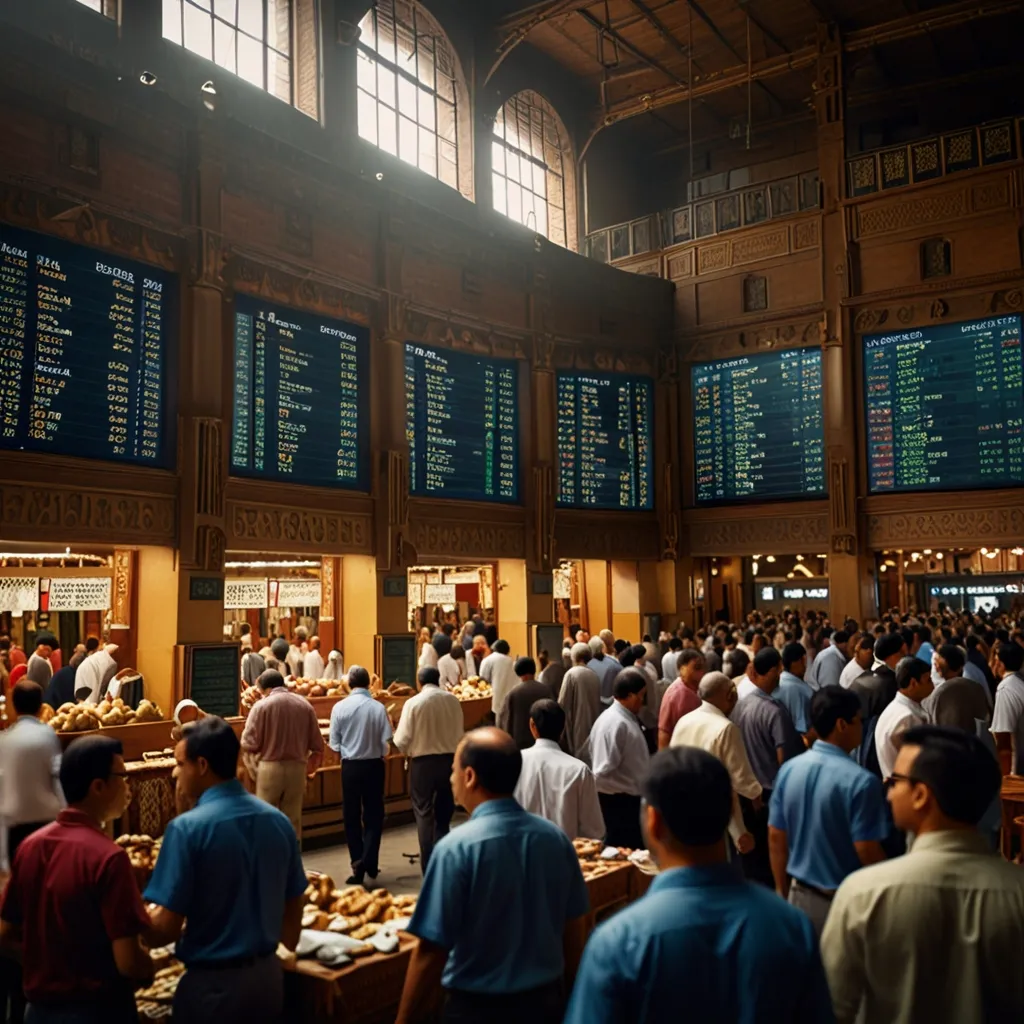The merchant banks of Renaissance Italy laid the groundwork for modern finance, pioneering practices we still rely on today. These family-run institutions emerged in the bustling city-states of 14th to 16th century Italy, transforming the economic landscape of Europe and beyond.
I find it fascinating how these early bankers solved practical problems of commerce in ways that continue to shape our financial world. They didn’t set out to create a banking revolution, but rather developed innovative solutions to the challenges of conducting business across vast distances in a fragmented Europe.
Picture yourself as a wealthy merchant in 15th century Florence. You need to pay for a shipment of fine silks from Venice, but transporting chests of gold coins across bandit-infested roads is risky and impractical. What do you do? This was the dilemma that spurred Italian bankers to create financial instruments like bills of exchange - essentially an early form of check that could be redeemed for payment in another city.
“A banker is a fellow who lends you his umbrella when the sun is shining, but wants it back the minute it begins to rain.” - Mark Twain
This quip highlights the age-old tension between bankers and their clients. But Renaissance Italian bankers were more than just lenders - they were innovators who transformed how business was conducted.
One of their most enduring legacies is double-entry bookkeeping. Prior to this, financial records were often haphazard affairs. The Italians introduced a system where every transaction was recorded twice - as a credit in one account and a debit in another. This seemingly simple change revolutionized accounting, allowing for greater accuracy and accountability.
Have you ever balanced a checkbook or reviewed a bank statement? If so, you’ve benefited from this Renaissance innovation. Double-entry bookkeeping remains the foundation of modern accounting, enabling businesses to track complex financial flows with precision.
The structure of these early banks is also strikingly familiar. Headquartered in commercial hubs like Florence or Venice, they established branches and correspondents across Europe - from London to Constantinople. This network allowed them to facilitate trade and payments across vast distances.
I’m reminded of how today’s global banks operate, with headquarters in financial capitals and branches spanning continents. The Medici Bank of the 15th century, with its hub in Florence and outposts across Europe, laid the template for this model centuries ago.
These banks weren’t just passive intermediaries - they actively shaped the economic and political landscape of Renaissance Europe. They financed trade voyages, managed the papacy’s finances, and even bankrolled wars. The Medici family parlayed their banking success into political power, eventually ruling Florence and producing four popes.
“The world of finance hath become a slippery place.” - Geoffrey Chaucer
Chaucer’s observation from the 14th century rings true across the ages. The Italian bankers’ growing influence came with increased risks and responsibilities.
The cautionary tale of the Bardi and Peruzzi banks illustrates this perfectly. These Florentine powerhouses collapsed in the 1340s after King Edward III of England defaulted on massive loans. Their fall sent shockwaves through the European economy and offers an early lesson in concentration risk - the danger of putting too many eggs in one basket (or too much faith in one royal borrower).
I wonder: how might our financial system be different if those medieval bankers had been more cautious in their royal lending? Would we have developed stronger risk management practices earlier?
The innovations of these Renaissance bankers extended to the very nature of money itself. By issuing letters of credit and other financial instruments, they effectively created a new form of currency - one based on trust and reputation rather than precious metals. This laid the groundwork for our modern financial system, where most “money” exists as digital entries rather than physical cash.
“Whoever controls the volume of money in any country is absolute master of all industry and commerce.” - James A. Garfield
While Garfield was speaking centuries after the Renaissance, his words reflect the immense power wielded by these early bankers. By controlling the flow of credit, they shaped economies and influenced political decisions at the highest levels.
The legacy of these Italian merchant banks extends far beyond the specific financial instruments they created. They fostered a new way of thinking about wealth, credit, and economic relationships. Their innovations made it possible to conduct business on a truly international scale, paving the way for the global economy we know today.
I’m struck by how many of our modern financial concepts have their roots in this period. From branch banking to relationship management, from international payments to financial record-keeping - the DNA of our current system was largely established in the workshops and counting houses of medieval Italy.
Of course, it’s important to recognize that this wasn’t a sudden revolution. The Italian bankers built on earlier innovations, particularly from the Islamic world. They adapted and refined existing ideas, creating a synthesis that would transform European finance.
What lessons can we draw from this history? Perhaps most importantly, it reminds us that financial innovation often arises from practical needs rather than abstract theory. The Italian bankers weren’t trying to create a new economic system - they were solving real-world problems of commerce and trade.
It also highlights the interconnected nature of finance and broader society. The rise of these banks was intimately tied to the cultural and artistic flowering of the Renaissance. As wealth flowed through their hands, much of it was channeled into patronage of the arts, architecture, and scholarship.
“I have always paid income tax. I object only when it reaches a stage when I am threatened with having nothing left for my old age - which is due to start next Tuesday or Wednesday.” - Noel Coward
While Coward’s quip is far removed from Renaissance Italy, it touches on a timeless theme - the balance between private wealth and public good. The Italian bankers, for all their profit-seeking, often saw themselves as stewards of their communities. Their philanthropy shaped the physical and cultural landscape of Renaissance Italy.
As we grapple with questions of financial regulation and the role of banks in society today, it’s worth considering this historical perspective. How can we harness the innovative spirit of those early bankers while avoiding the pitfalls of concentrated power and systemic risk?
The story of Renaissance Italian banking is more than just a historical curiosity. It’s a reminder of how deeply rooted our financial practices are, and how innovations born of necessity can shape economies for centuries to come. As we navigate the rapidly changing landscape of modern finance - with its digital currencies, algorithmic trading, and global instantaneous transfers - we’re still building on the foundations laid in the piazzas and palazzos of medieval Italy.
What would those pioneering bankers make of our current financial system? I suspect they’d recognize more than we might expect. The core principles they established - of credit, trust, and the power of financial intermediation - remain as relevant as ever.
As we face new challenges in our increasingly complex financial world, we would do well to remember the lessons of those Renaissance innovators. Their story reminds us that at its heart, finance is about facilitating human activity and relationships. It’s a tool that, when wielded wisely, can foster prosperity and cultural flourishing.
The next time you check your bank balance on your smartphone or make an international transfer with a few clicks, spare a thought for those medieval Italian bankers. Their ingenuity and entrepreneurial spirit set in motion a financial revolution that continues to shape our world today.






